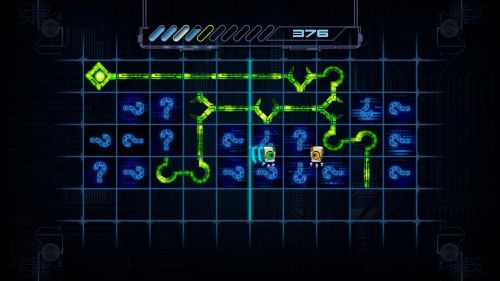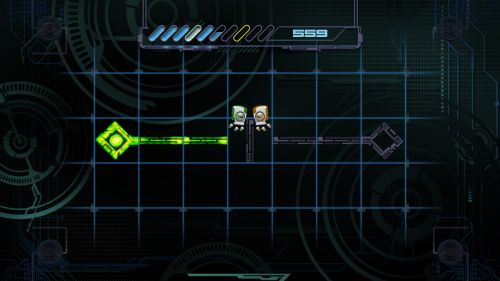
Building barriers to bring viruses together
Being a Good Spouse to Your Players
Watching people play your game is imperative in game design. What's "fun" is simply too complex to not iterate. Listening to feedback is similar in that you can understand how the player perceives the game and possible problem areas. This is, of course, a double-edged sword. I don't know that a game designed by committee would result in a great game because sometimes you have to trust that you have a better holistic understanding of your game. For example, while the player may feel frustration due to a feature, that frustration can be good in the long run if used correctly.
In AVNT, time and again in early play tests, players were frustrated by inter-player collisions. They told me that it was simply frustrating to try to solve a puzzle and avoid drones when you got in one another’s way. The almost universal suggestion I got for this was to allow players to pass through one another. Being a game designer is like being in a marriage with your players: you have to listen to everything they say, then pick your battles, and have a good reason for each one. This is a battle I picked. For me, not having player collisions is like turning off friendly fire in a FPS. I made this game co-operative so you would affect one another, for better or worse, warts and all. If there are too many cooks in the kitchen, you have to learn how to work together, like a well oiled machine.
Allowing players to pass through one another is a step in the wrong direction. It takes the game one step closer to everyone playing the game as an individual, because it removes players having to consider one another in their movement, which is arguably half of the gameplay in AVNT. The added difficulty forces the players to work together, and they usually become a much more efficient unit because of it. They have to communicate - imagine that! Not only that, but there's the very real component of griefing!

Frenemies 4 life
Like friendly fire, half the fun of being able to affect other players is screwing them over, even when it hurts the team, because it's fun! This is why 90% of the time my brother and I start an FPS together, one of the first things that happens is one of us will shoot the other. It's just fun! In the beginning our collisions simply weren't fun enough. In the early version of AVNT we hadn't put the feedback and emotion into the collision that we have now. We now have a sound, TOM's bounce off each other, and the TOM that was hit looks really annoyed and curses (in garbled virus speak) at the other TOM. This addition alone made collisions more enjoyable, and encouraged that sort of griefing. When players see this they tend to continue to "annoy" their fellow TOMs this way and laugh, out loud! We then continued down our dark path by adding a role award for this and an achievement for bouncing a teammate back into harm’s way, killing them. There's plenty of room for deviant behavior in cooperation, and after all, you are a virus.
Experience Trumps Intuition
Intuition left unchecked is arrogant guessing. Intuition is useful to find a starting place but don’t ever fool yourself into believing that you understand anything you haven’t seen in action. My intuition told me the following about cooperative puzzle levels:
- I should avoid complex puzzles, as they require a lot of deep thinking, which is best for single player levels
- The levels should be larger to avoid too many un-intended player collisions
- Multiple sources and paths would be best to allow for multiple sub-puzzles to solve
- Avoid the combination of difficult puzzles with lots of drones
What I found:
2 out of 4 ain't bad... Larger boards and multiple sources did help the levels become more enjoyable, but shying away from very difficult puzzles or dexterity did not. Just as in single player, conflict and struggle ties the group together. Players break into roles, talk through complex puzzles, and high five fiercely upon completion. The key, just as in single player, is to vary up just how much puzzle and how much dexterity were in each level, so that players who enjoyed one over the other would never be more than a level or two away from a level they liked, and generally the pacing kept things interesting.
What else I found:
Busy work is good for co-op, not so much for single-player. What I mean by this is that when playing cooperatively, having a board full of lots of pieces that need to be turned is kind of fun. Seeing how quickly a circuit can be re-configured when pooling resources is pretty cool. When playing single-player, it simply feels like busy work since no one else is whistling with you while you work.